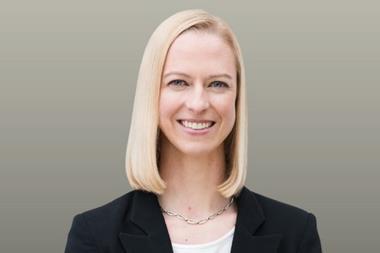Swiss pension funds and associations are assessing the clear “no” to the occupational pension reform in a vote held yesterday, picking up the pieces to continue to change second pillar pensions as the country faces higher life expectancy rates and a broken labour market.
“We should see the rejection of the reform as an opportunity. We have a certain momentum now; people have dealt with the issue [of the second pillar pension reform]. We have to build on this interest and show people that today a lot of adjustments can be made on a voluntary basis,” Nico Fiore, managing director at Inter-pension, the organisation representing the interests of Swiss multi-employer pension schemes, told IPE.
Employers and Pensionskassen can find solutions to respond to employee needs, on a more flexible coordinated deduction to decide the share of the wage insured under the second pillar for example, that can be implemented on a voluntary basis, without a legislative proposal, he added.
According to the Swiss employers’ association, the “no” to the reform has a negative impact on the three-pillar system, which lacks a stable second pillar, it said in a statement.
The proposal to reform the second pillar pension system, rejected by the public for the third time in the last 15 years, with 67.12% voting against it yesterday, aimed at improving pension provisions for part-time workers and low-earners by lowering the threshold to join schemes, changing the coordination deduction, with a larger part of the salary insured under the second pillar, and rebalancing lower pension payouts with a pension supplement.
The discussion on the measures proposed will likely continue but, even before a new reform is discussed by the legislator, pension funds should assess those important factors on a regular basis, Ramzi Richani of the Swiss Chamber Pension Fund Experts (SKPE), and WTW’s Estelle Caveng, wrote in a post.
“I have not heard from anyone in the occupational pension industry considering this [the supplement] positive,” Fiore said.
The chief executive officer of the pension fund of the Canton of Solothurn, Emmanuel Ullmann, said in a LinkedIn post: “Look at what the laws for cantonal pension funds are doing. The [second pillar] law should only regulate the financing. [Stay] away from minimum interest rates and the conversion rate to pay pension payouts. It works well.”
Thomas Schmidiger, managing director at Alvoso Pensionskasse, the pension fund for small and medium sizes companies, said that it is now important for companies to use the leeway that already exists when designing their own second pillar plans.
He added that is possible to cut the wage threshold to join a Pensionskasse to insure low-earners, to lower the coordination deduction to insure a higher share of the wage under the second pillar, and to make the process of gradual savings flatter, to save more right from the start of a working life.

Swiss multi-employer pension scheme Asga Pensionskasse regrets the vote against the reform, with women and part-time workers who could have benefited from improvements in terms of pension provision, coming out as “losers”, it said in a statement.
Rejecting the reform means that the pressure for occupational pension reforms remains, to protect women and part-time workers, and new approaches to find solutions for the second pillar are necessary, it added.
Asga has already designed a “comprehensive benefits strategy” aimed at providing stable and sustainable pensions, offering individual pension solutions for companies and their members, it added.
Swiss pension funds association ASIP has called to reinforce the trust of the public in the second pillar, that has been “severely strained” during the referendum campaign, taking a deep breath to assess the situation, and halting the desire of putting forward further legislation, president Marthin Roth said.
He added: “Swiss pension institutions will undoubtedly fulfil their responsibility for a stable, efficient pension system organised on the basis of social partnership. They will make greater use of leeways outside the statutory requirement, adapting to increasing life expectancy and the changing labor market.”
Pension funds will invest the savings in a “cost-conscious manner and effectively”, protecting members in old age, disability and death, Roth added.
The Swiss Federation of Trade Unions, SGB USS, which vehemently campaigned against the reform and against higher administrative and asset management costs of Pensionkassen, back a change of direction now.
“Instead of pension cuts, higher interest rates on retirement savings and compensation for inflation on pensions are needed. The “no” [to the reform] is at the same time a clear no to the billion-dollar business of the financial industry and private insurance companies at the expense of employees,” it said.
The latest digital edition of IPE’s magazine is now available
































No comments yet